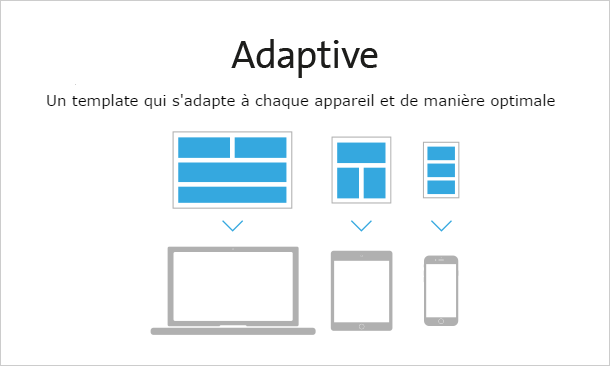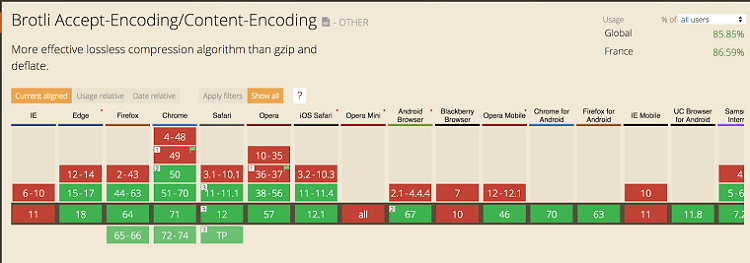“Why is my site slow on mobile?”
You’ve probably already noticed the difference in speed between pages on the same website on mobile and desktop. HTTP Archive, which monitors the state of the web, reports that a page takes 6.6s to load on desktop and… 19.7s on mobile (medians). However, in mobile situations, web users are even more impatient.
Yes, no one likes to wait, and even less so with a smartphone in hand. One study shows that 85% of mobile users expect a website to load faster on mobile than on desktop, and another reveals that 14% of online shoppers even expect pages to load instantly. And that’s just the beginning!
If the frustration caused by poor loading times is too great, mobile users are merciless: according to a study carried out by Google, 53% leave the website after 3 seconds if the page is not displayed, and are unlikely to return. The slowness of your web pages is therefore a risk for your sales, since, as Google points out, an extra second of loading time can reduce the conversion rate by 20%.
When you consider that more than halfthe world’s web traffic comes from mobile devices, and that 4/10 French web surfers use their mobiles exclusively to surf the web, having a fast mobile site should be a priority.
Although website performance is harder to improve on mobile due to processor power and more random network conditions, there are optimization techniques within reach to optimize your speed and UX. Let’s see which ones.
Dimensions and formats: adapting images for mobile
Optimize and automatically resize images for mobile devices
Images account for an average of 50% of the weight of web pages, which on average weigh 2 MB. By optimizing your images, it goes without saying that page weight will be reduced, and the speed of your site improved.
By compressing images for faster mobile display, you can reduce their weight by up to 70% without losing visual quality.
As with the desktop version of your site, also think about lazyloading,inlining small images and Progressive JPEG to save even more precious milliseconds on your loading times.
Loading an image with Progressive JPEG
You may be wondering which image format is the most effective for a good PageSpeed score? The WebP format offers excellent performance.
Without loss, it’s 26% lighter than PNG, and with loss it’s 25 to 34% lighter than JPEG for the same perceived quality. However, it is not suitable for all situations (especially if your images contain text, or if you wish to apply progressive loading techniques).
Another format you may already have heard of is AVIF, which offers increasingly interesting performance:
The more compressed an image, the more power a device will need to decompress it. This is a parameter to be taken into account when defining how to serve images to the browser, depending on the mobile user’s equipment.
For a better user experience, also consider automatically resizing your images to fit your visitors’ screen size. Whether you’re talking about resizing or cropping to fit the viewport size , it’s in your interest to ensure that this operation is carried out on the server or CDN side, so that the browser doesn’t have to consume CPU to do it.
Adaptive design: managing templates
While speed is the No. 1 UX requirement of mobile users, adapting pages to the screen is also one of the criteria used to assess the quality of a website.
Here’s what you need to think about for a site designed using adaptive design (not to be confused with responsive design):
- the management of different page templates for different screen sizes, to ensure that your server sends elements in the right dimensions to the browser (in adaptive design, the choice of template is made at server level thanks to the HTTP User-Agentheader ). For example, you may decide to display an image rather than a video, or a widget on a cell phone if the network isn’t very powerful (our engine makes it easy to manage these different templates);
- cache management (which we’ll look at a little later), so that your server also sends the correct version of the cached page according to screen size.
Minimizing JS / CSS / HTML files
What is minification? This technique is beneficial on both mobile and desktop devices: it involves removing all unnecessary characters and spaces from the HTML, JavaScript or CSS code of a web page. As a result, the code is lighter, and so are the pages.
Concatenate JS and CSS files
After minification, here’s another best practice for reducing page weight: concatenating CSS and JavaScript files. This reduces the number of total requests, and the fewer the requests, the faster a page can be served by the browser. Indeed, if the browser spends less time requesting information from the server and waiting to retrieve it, it can display the page faster.
Compressing HTML, CSS and JS resources
Compress your HTML, CSS and JS resources to make them even lighter. There are several formats and levels of compression available, so you’ll need to choose the one best suited to your needs and configuration.
The Gzip compression format offers very good performance, but the nec plus ultra is now Brotli. At one of our customers, for example, this format reduced the weight of CSS files by 12% compared to Gzip, and LinkedIn even saw a 30% improvement thanks to this compression format.
Gzip offers 6 levels of compression, while Brotli offers 11. But should we go for the highest level of the best-performing format? Not necessarily. Indeed, while Brotli’s maximum compression level allows you to keep your resources as light as possible, it also requires more compression time. So, depending on your resources and context, there’s a balance to be struck.
In addition, Brotli is not supported by all mobile browsers, and this format implies updating your server, reconfiguring it, and generally reviewing the resource generation process. You should also be aware that Brotli is only supported in HTTPS (if you haven’t yet migrated , here’s a detailed guide).
Overview of Brotli support by web browser
As you can see, resource compression is essential, but it also requires technical expertise if it is to move in the right direction and not be counter-productive.
The risks of JavaScript for entry-level models
“Excess JavaScript severely degrades the browsing experience on a mobile site, and I notice that nobody thinks to check performance on all devices – even less so on entry-level devices. Yet these are the first to be blocked if JS is not optimized”, laments webperf expert Jean-Pierre Vincent.
Although they are useful and sometimes essential to the functioning of a site, JS can multiply by 2 or 3 the access time to certain functionalities on a website.
Think of your users who are not equipped with powerful, state-of-the-art laptops (often the majority): lighten your JSbundles, divide files so that they load more quickly, defer scriptexecution.
If Third Parties are a pain, we’ve dedicated a white paper to the subject, which you can download here.
Manage your caching strategy and adopt a Smart Cache system
To limit the number of requests between a browser and a server, it is also necessary to cache as many resources as possible. This data is stored in the cache of the server, browser or CDN, so that it can be served to the user more quickly, rather than being systematically requested from the origin server.
But not all data on a web page can be cached, or can be cached in the same way. For example, dynamic elements that depend on the browsing context, or a shopping cart, cannot be cached in the same way as static page elements, as they are likely to change during browsing or from one navigation to the next.
You therefore need to implement a caching strategy and rely on an intelligent caching system, which will enable you to distinguish between elements that can be cached and those that should not.
How to apply webperf optimizations effectively to a mobile site
Best practices and webperf optimization techniques need to be applied intelligently to work well together, and they’re evolving fast.
You may already have monitored the speed of your mobile site using tools such as PageSpeed Insights or Google’sTest My Site, but don’t jump into applying the recommendations without expert advice!
While these tools can provide an overview and interesting data on loading speed, not all the recommended optimizations are applicable, or exactly result in the promised improvements.
You can optimize your site’s code to speed up your pages, but to make the task easier and ensure lasting results with minimum effort, it’s best to automate the application of these webperf optimizations. All the techniques mentioned above can be automated using our Frontend Optimizationengine .
This is,for example, the choice made by the e-commerce site But to save time for its technical teams, and to stop continually repeating the same work each time the site evolves or is modified.
You should also be aware that optimizations applied to the mobile version are bound to be beneficial to the desktopversion , and will ensure that you’re always ready to absorb load peaks in the event of promotions, sales, private sales… for a site that’s fast, reliable and available in all circumstances.
In addition to your users, you also need to make your site fast for your SEO, since from September 2020, Google will be prioritizing Mobile Firstindexing . This means that pages will first be crawled by the search engine as if they were a cell phone.
So, for your users, your SEO and your conversion rates, even if it requires more effort, you have everything to gain by improving your Site speed on mobile!
UX, SEO and sales: the benefits of a fast mobile site
To sum up, in addition to satisfying your visitors thanks to a better UX, fast pages on mobile ensure :
- better visibility in search results – Alltricks, for example, increased its SEO traffic by 25% by improving its loading speed;
- lower bounce rates – Villages Clubs du Soleil recorded a 20% reduction in bounce rates after improving its webperf ;
- better conversion rates – IKKS saw a 20% increase in mobile conversion rates with new customers after speeding up its e-commerce site.
Would you like to find out more about the webperf indicators to track
and how to improve them?

























